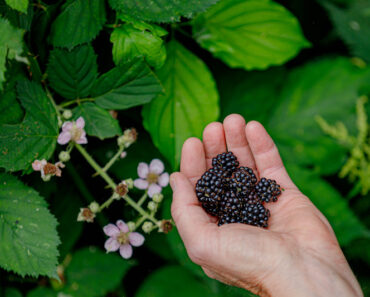In the quest for a healthier, more sustainable lifestyle, the spotlight has fallen upon a seemingly unassuming plant: Aloe vera. While it may not look like much, this green wonder packs a punch when it comes to its myriad benefits for your well-being.
In this article, we’ll embark on a journey into the world of Aloe vera, unraveling the reasons why harvesting and cultivating this remarkable succulent can be a game-changer for you. So, get ready to discover the hidden gems of Aloe vera in a clear and straightforward way, and let’s unlock the potential of this incredible plant together.
Aloe vera is more than a resilient plant; it’s a living pharmacy, a natural healer, and a green ally that has been cherished for centuries. From soothing sunburns to enhancing the quality of your indoor air, Aloe vera offers a wide range of practical benefits that might surprise you.
Earn Your Food Independence NOW
Aloe description
Aloes are part of the Aloe genus and fill our world with their unique presence. You might be surprised to learn that there are approximately 500 distinct species of aloes scattered across the globe. These remarkable plants find their botanical home in the extensive lily family, revealing an intriguing connection to other flora that few people are aware of.
While aloes have ventured far and wide, their roots trace back to the sun-soaked landscapes of Africa and the Middle East, where they have thrived for generations. Today, aloe plants have become such familiar presences that you’ve probably encountered them at your local supermarket or perhaps while browsing through the offerings of a garden supply shop or nursery. Their widespread availability speaks to their enduring popularity and the curiosity they evoke in enthusiasts and novice gardeners.
When you encounter an aloe plant, its distinctive features are unmistakable. These resilient succulents form a captivating rosette of fleshy, lance-shaped leaves that can reach lengths of up to a foot or even longer. The edges of these leaves are adorned with somewhat soft spines, adding a touch of character and uniqueness to each plant. In the wild, they’ve adapted to a variety of conditions, making them equally at home in arid deserts and lush gardens.
Come the flowering season, aloes put on quite a show. Tall, leafless stalks shoot up, often reaching a height of a foot or more, displaying their vibrant blooms with pride. Most of these flowers showcase a captivating palette of orange or yellow hues, adding a touch of natural beauty to their surroundings and attracting pollinators with their sweet nectar.
While aloes encompass a diverse array of species, the one that most readily comes to mind is the Aloe vera, aptly named “true Aloe.” Its reputation as a versatile and valuable plant precedes it, making it a household name for those who appreciate the wonders of nature’s pharmacy.
Where to find it in the United States
While it’s not commonly found growing wild in the United States, there are a few places where you might potentially encounter Aloe vera plants in the wild in the U.S., particularly in regions with climates resembling their native habitat:
Southern Florida: In the southernmost parts of Florida, which have a subtropical climate, Aloe vera can sometimes be found growing in the wild. These areas have a climate that is more hospitable to tropical and subtropical plants.
Botanical Gardens and Natural Reserves: Aloe vera may be cultivated in botanical gardens or natural reserves, sometimes in an outdoor setting that mimics its native habitat. Visiting such places can provide you with an opportunity to see Aloe vera plants in a semi-natural environment.
Private Gardens and Landscapes: Occasionally, Aloe vera may escape cultivation and establish itself in private gardens, parks, or outdoor landscapes. In these cases, you might come across Aloe vera growing somewhat naturally, though it’s not technically in the wild.
Desert Gardens: In arid regions of the southwestern United States, you might find Aloe vera planted in desert gardens or xeriscape landscapes. These gardens showcase a variety of desert-adapted plants, including Aloe vera, and aim to educate visitors about sustainable landscaping practices.
When is available for harvest and how to do it
Aloe vera leaves can be harvested when they have reached a suitable size and age, but it’s important to do so properly to ensure the plant’s health and maximize the benefits of the gel inside the leaves. Here’s a guide on when to harvest Aloe vera leaves and how to do it:
1. Leaf Size and Age: Aloe vera leaves are ready for harvest when they are mature and have reached a certain size. The leaves should ideally be at least 8-10 inches long and reasonably thick. Do not harvest leaves from young plants, as they need their leaves to continue growing and thriving.
2. Choose Healthy Leaves: Select leaves that are free from blemishes, discoloration, or signs of disease or damage. Healthy leaves will contain the highest quality gel.
3. Harvesting Process:
a. Tools: You will need a sharp, clean knife or scissors for harvesting. Ensure that your tools are sanitized to prevent any contamination.
b. Cutting: To harvest a leaf, make a clean cut as close to the base of the leaf as possible without damaging the plant. It’s best to cut leaves individually rather than removing all of them at once.
c. Trimming: After cutting, you can trim the spiny edges of the leaf and remove the skin from the sides to expose the clear gel inside. Be cautious while doing this, as the yellowish sap (aloin) just beneath the skin can be a skin irritant and should be avoided.
It’s essential to harvest Aloe vera leaves responsibly to ensure the plant’s continued health. Avoid taking too many leaves at once, as this can stress the plant. Allow time for the plant to recover between harvests, and never remove more than one-third of the plant’s leaves at a time.
How to grow Aloe vera
Growing Aloe vera can be a straightforward and rewarding endeavor, whether you’re nurturing it indoors or in your garden, provided you follow some essential guidelines. Here’s a comprehensive guide on how to cultivate Aloe vera successfully:
1. Choosing a Suitable Location:
Indoors: Aloe vera is an excellent choice for indoor cultivation. Place your potted Aloe vera near a sunny window where it can receive indirect sunlight for at least 6 hours a day. A south- or west-facing window is ideal.
Outdoors: In regions where freezing temperatures are not a concern, Aloe vera can be grown outdoors. Select a well-drained location with partial to full sun exposure. Ensure the soil in your chosen spot drains well to prevent waterlogged roots.
2. Soil and Potting Mix:
Indoors: Use a well-draining potting mix designed for succulents or cacti. Adding perlite or sand can improve drainage further.
Outdoors: Aloe vera thrives in sandy or rocky soils with good drainage. Amending the soil with organic matter can enhance its water-retention capacity while maintaining drainage.
3. Planting and Repotting:
Indoors: Choose a suitable pot with drainage holes. Plant Aloe vera in a pot that allows at least 2-3 inches of space around the plant. Repot when the plant outgrows its container or becomes root-bound.
Outdoors: If planting Aloe vera in your garden, ensure proper spacing between plants to allow for their natural spreading habit.
4. Watering:
Indoors: Aloe vera is a succulent and prefers to dry out between waterings. Water the plant thoroughly, but allow the top inch of soil to dry before watering again. Overwatering can lead to root rot.
Outdoors: Water newly planted Aloe vera until established. Once established, water sparingly, especially during the rainy season.
5. Fertilizing:
Aloe vera generally doesn’t require frequent fertilization. Use a balanced, diluted, liquid fertilizer once a month during the growing season (spring and summer) to promote healthy growth.
6. Multiplication:
Aloe vera naturally reproduces by producing “pups” or offshoots around the base of the plant. These pups can be carefully separated and replanted once they reach a reasonable size.
7. Pruning and Maintenance:
Remove dead or damaged leaves as needed to keep the plant tidy. Trim the leaf tips for any desired cosmetic purposes or for using the gel.
8. Winter Care:
If growing Aloe vera outdoors and frost is a concern, provide protection during the colder months by moving potted plants indoors or covering outdoor plants with frost cloth or a blanket.
With these guidelines, you can successfully grow Aloe vera both indoors and outdoors, ensuring that you’ll soon have a thriving and beautiful collection of these beneficial plants. Plus, with the natural propagation of Aloe vera, you might find yourself with an abundance of plants to share with friends and neighbors in no time.
Aloe vera properties
Aloe vera is renowned for its diverse range of properties, making it a versatile plant with numerous potential health benefits. Here’s an overview of its properties:
Abortifacient: Aloe vera is traditionally believed to have abortifacient properties, meaning it may induce miscarriages. However, it’s essential to note that the use of aloe for this purpose is not safe and is strongly discouraged. Pregnant individuals should avoid using aloe products internally or externally due to potential risks.
Analgesic: Aloe vera contains compounds that may have mild analgesic (pain-relieving) properties. When applied topically, it can provide relief from minor skin irritations and sunburn.
Antiaging: Aloe vera is often included in skincare products due to its potential antiaging properties. It may help improve skin elasticity, bu also reduce the appearance of wrinkles.
Antibacterial: Aloe vera possesses antibacterial properties, which can help inhibit the growth of certain bacteria. It’s often used topically on wounds and burns to prevent infection.
Antiherpetic: Some studies suggest that Aloe vera may have antiherpetic properties, meaning it could potentially help reduce the symptoms and discomfort associated with herpes outbreaks.
Antihistaminic: Aloe vera may have antihistaminic properties, which could help alleviate allergy symptoms by reducing histamine release. This makes it beneficial for soothing skin conditions caused by allergies.
Anti-inflammatory: Aloe vera is well-known for its strong anti-inflammatory properties. It can help reduce inflammation and redness when applied topically, making it effective for soothing skin irritations and conditions like sunburn.
Antiseptic: Aloe vera’s natural antiseptic properties make it useful for disinfecting minor cuts, burns, and wounds. It helps prevent infection and promote healing.
Aperient: Aloe vera has a mild laxative effect when taken internally. It can help relieve constipation by promoting bowel movements.
Cholagogue: Aloe vera may stimulate the production of bile in the liver, which can aid digestion and the breakdown of fats.
Collagenic: Aloe vera contains compounds that may stimulate collagen production, contributing to skin elasticity and wound healing.
Depurative: Aloe vera is considered a depurative, meaning it may help purify the blood and remove toxins from the body. This property is often associated with its use as a detoxifying agent.
Digestive: Aloe vera can promote healthy digestion by soothing the digestive tract, reducing inflammation, and aiding in the absorption of nutrients.
Emmenagogue: Aloe vera is sometimes associated with emmenagogue properties, which means it may stimulate menstruation. However, its use for this purpose is not well-documented, and caution should be exercised.
Fungicide: Aloe vera has antifungal properties and can be used topically to treat fungal infections like ringworm or athlete’s foot.
Hemostat: Aloe vera’s natural gel can promote blood clotting, making it beneficial for minor cuts and wounds.
Hypoglycemic: Some studies suggest that Aloe vera may help lower blood sugar levels, making it potentially beneficial for individuals with diabetes. However, it should be used with caution and under medical supervision.
It’s important to note that while this amazing plant has many potential health benefits, its effectiveness can vary, and not all properties may apply to every individual. Additionally, using aloe products should be done with care and in accordance with recommended guidelines.
If you have specific health concerns or conditions, I recommend consulting a healthcare professional before using the plant for medicinal purposes.
Aloe vera uses
For nutrition
Aloe vera can be a nutritious addition to your diet when used appropriately. It’s important to note that the gel inside the Aloe vera leaf is the part typically consumed for its nutritional benefits. Here’s how you can use Aloe vera for nutrition:
Harvesting the Gel:
If you have an Aloe vera plant, you can harvest the gel from its leaves for consumption. Choose mature leaves that are at least 8-10 inches long.
Cut a leaf close to the base of the plant and let it drain for a few minutes to allow any yellow latex (aloin) to seep out. This latex can be a strong laxative and should be avoided in food preparations.
Preparing the Gel:
Carefully remove the skin from the sides of the leaf to access the clear gel inside. Use a sharp knife to do this.
Once you’ve extracted the gel, rinse it thoroughly under cold running water to remove any remaining latex residue.
Consuming the Gel:
Aloe vera gel has a slightly bitter taste, which some people find unpleasant when consumed on its own. To make it more palatable, you can mix it into various dishes or beverages.
Here are some ideas for incorporating Aloe vera gel into your diet:
a. Smoothies: Blend a small amount of Aloe vera gel (about two tablespoons) with your favorite fruits and vegetables to create a nutritious and refreshing smoothie.
b. Juices: Add Aloe vera gel to fresh fruit or vegetable juices for an extra nutritional boost.
c. Salads: Mix a small amount of Aloe vera gel into salad dressings or directly into salads for added nutrients.
d. Yogurt or Oatmeal: Stir Aloe vera gel into yogurt or oatmeal for a unique twist on your breakfast.
e. Beverages: Dilute Aloe vera gel with water or another beverage of your choice and drink it as a hydrating and nutritious beverage.
Dosage and Precautions:
Start with a small amount of Aloe vera gel (about 1-2 tablespoons) to assess your tolerance and avoid any digestive discomfort.
Be cautious not to consume excessive amounts of Aloe vera, as it can have a laxative effect in larger quantities.
If you have any underlying health conditions or are taking medications, consult with a healthcare professional before adding Aloe vera to your diet, as it can interact with certain medications.
It’s worth noting that while Aloe vera can offer some nutritional benefits, it’s not a substitute for a balanced and varied diet. It’s best used as a complementary element to enhance the nutritional profile of your meals.
For health issues
Aloe vera can be a versatile natural remedy for addressing a range of common health issues. However, it’s important to use it correctly and consult with a healthcare professional when necessary. Here are some ways to use Aloe vera for common health concerns:
Sunburn and Minor Burns:
Apply the pure Aloe vera gel directly to the affected area to soothe and cool the skin. Repeat the application as needed to reduce pain and inflammation.
Skin Irritations:
Aloe vera can help with various skin irritations, such as itching, rashes, and insect bites. Apply just a thin layer of Aloe vera gel to the irritated skin for relief. For itch relief, refrigerate the gel before applying.
Acne and Skin Blemishes:
Aloe vera’s anti-inflammatory and antibacterial properties can help with acne. Apply a small amount of Aloe vera gel to clean skin as a moisturizer. Use it regularly to reduce redness and inflammation.
Dry Skin and Moisturizing:
Aloe vera is an excellent natural moisturizer. Apply a thin layer of gel to dry skin to lock in moisture. Use it daily as part of your skincare routine.
Minor Wounds and Cuts:
Aloe vera can help with wound healing. Clean the wound, apply a thin layer of Aloe vera gel, and cover it with a sterile bandage. Change the bandage and reapply Aloe vera gel as needed.
Digestive Issues (Internal Use):
Aloe vera juice or gel can be used to soothe digestive discomfort. Consume a small amount (1-2 tablespoons) of pure Aloe vera gel or juice before meals.
Minor Oral Health Issues:
Aloe vera is often used as a mouthwash to help with minor gum irritations or bad breath. Dilute Aloe vera juice with water and use it as a mouth rinse. Spit it out after rinsing; do not swallow.
Hair and Scalp Health:
Aloe vera can promote healthy hair and scalp. Mix Aloe vera gel with your regular shampoo or conditioner, or apply it directly to your scalp and hair. Leave it on for a few minutes before rinsing.
Joint and Muscle Pain:
Aloe vera’s anti-inflammatory properties may provide relief for joint and muscle pain. Apply Aloe vera gel topically to the affected area and massage it gently. Combine with essential oils like lavender or peppermint for added benefits.
General Immune Health:
Aloe vera contains various vitamins and antioxidants that can support overall immune health. Consume Aloe vera juice or gel as a part of a balanced diet to help boost your immune system.
Note: Always perform a patch test before using the plant’s gel on your skin to check for any allergic reactions or sensitivity. If you have chronic or severe health issues, consult a healthcare professional for proper diagnosis and treatment. Additionally, ensure you are using pure Aloe vera gel or juice and avoid products with added chemicals or preservatives when using Aloe vera for health purposes.
Concluding
Growing Aloe vera is undoubtedly worth the effort. This remarkable succulent, with its myriad of health and cosmetic benefits, has earned its place as a valuable addition to gardens and homes alike. From its ability to soothe sunburn to its potential to enhance skin and hair health, Aloe vera’s versatility is unmatched.
Moreover, its low-maintenance requirements and ease of cultivation make it accessible to virtually anyone, regardless of their gardening expertise. Aloe vera isn’t just a plant; it’s a natural pharmacy, a skincare ally, and a green companion that offers a wealth of well-being. So, whether you’re a seasoned gardener or a novice enthusiast, consider growing Aloe vera—it’s a choice that can enrich your life in countless ways.




























